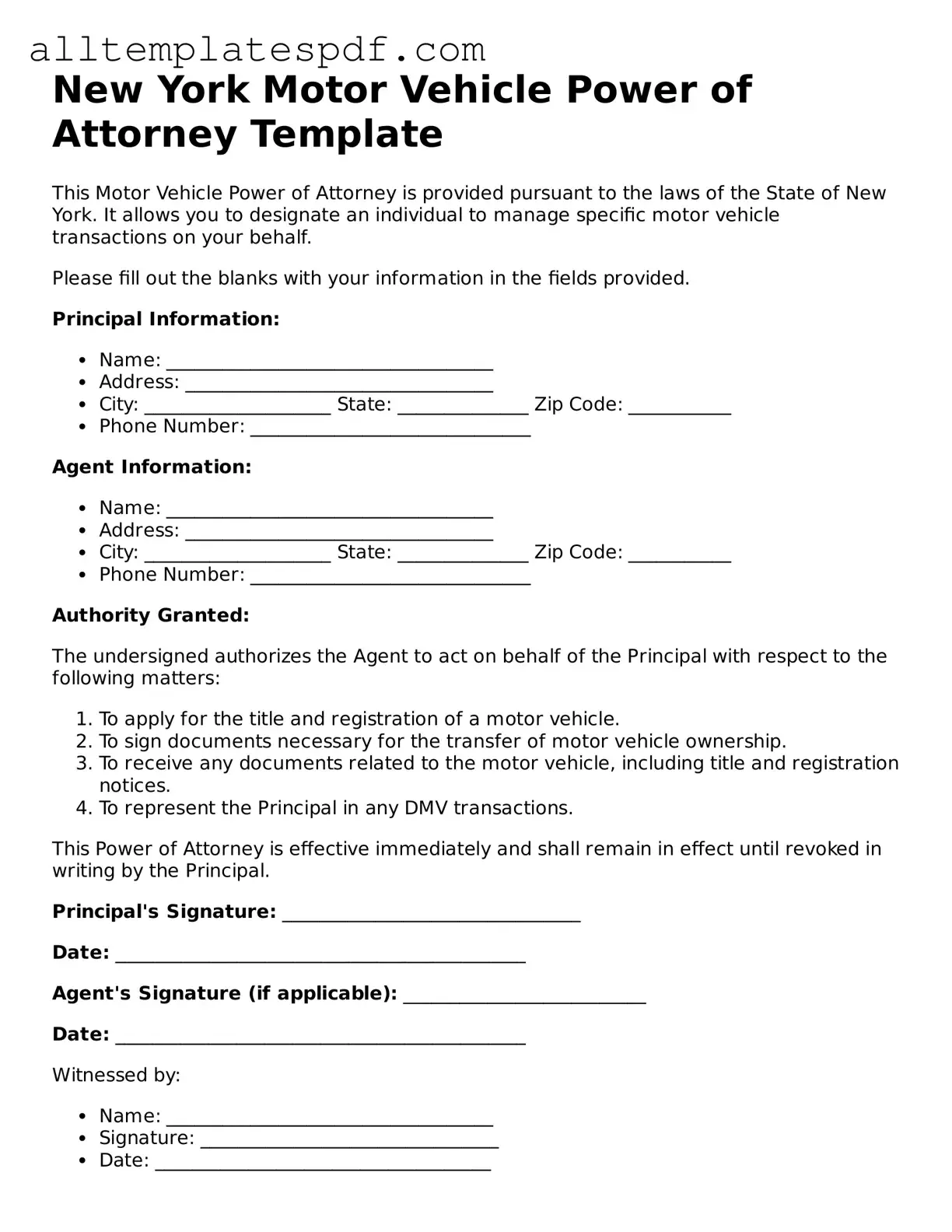Blank Motor Vehicle Power of Attorney Template for the State of New York
The New York Motor Vehicle Power of Attorney form is a legal document that allows an individual to designate another person to act on their behalf in matters related to motor vehicle transactions. This form is essential for anyone needing to transfer ownership, register a vehicle, or handle other vehicle-related tasks without being physically present. If you need to empower someone to manage your motor vehicle affairs, consider filling out the form by clicking the button below.
Open Editor
